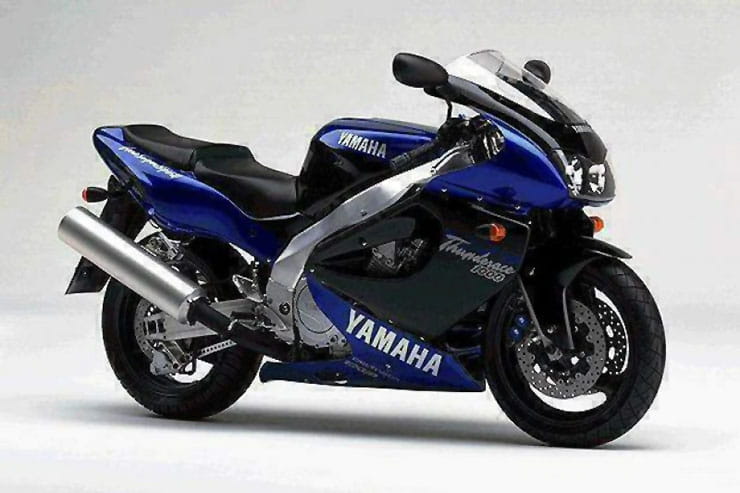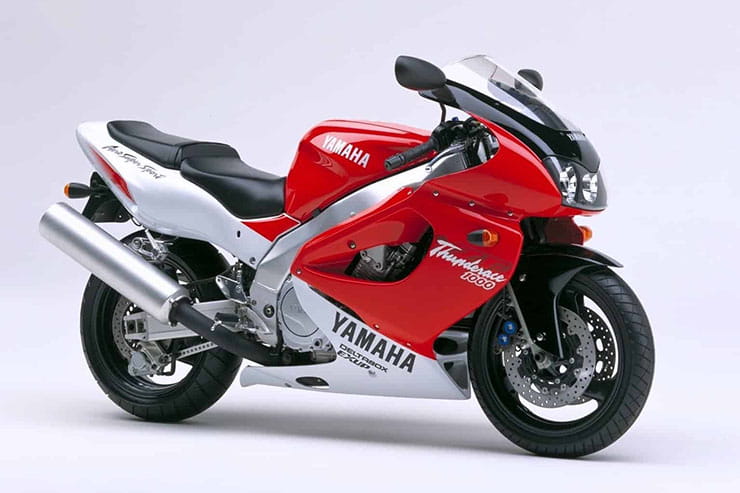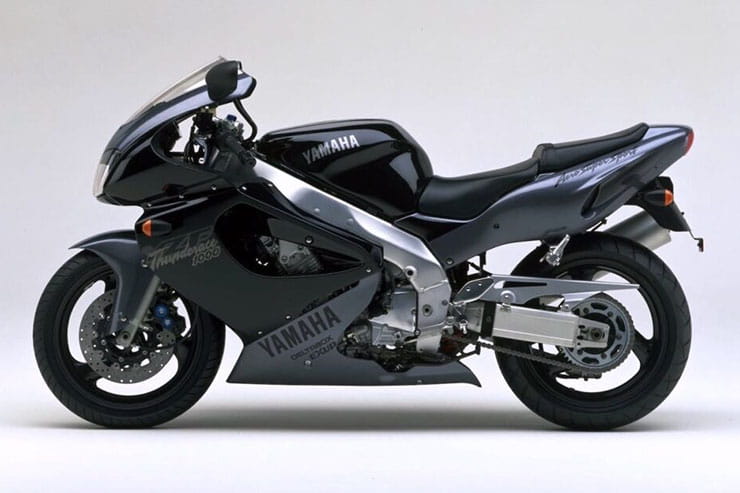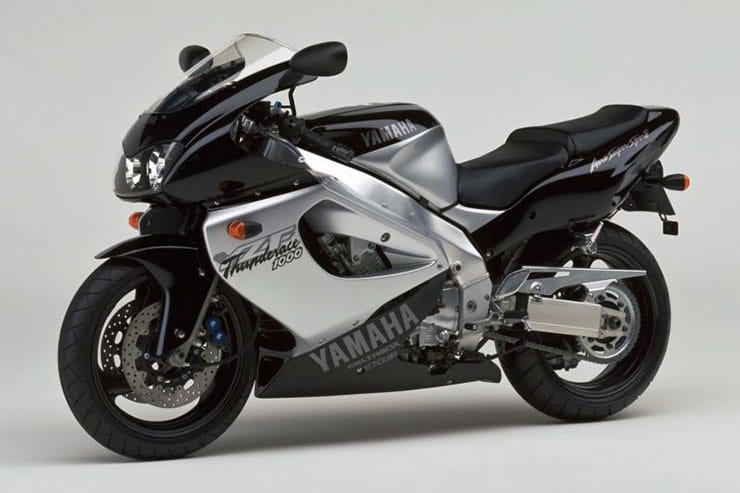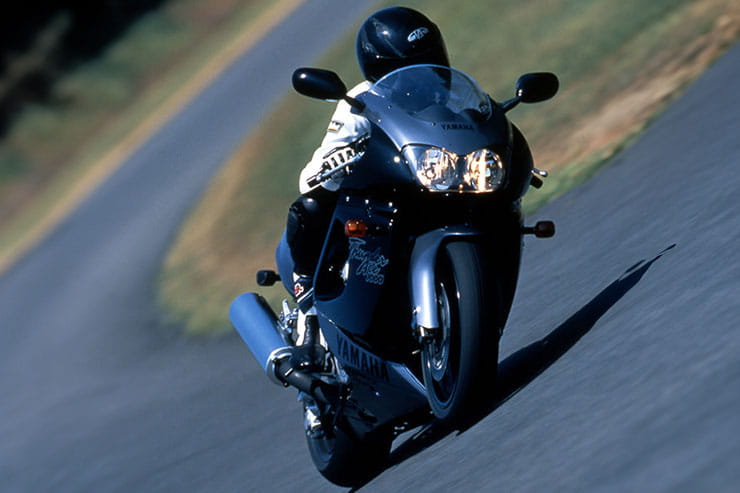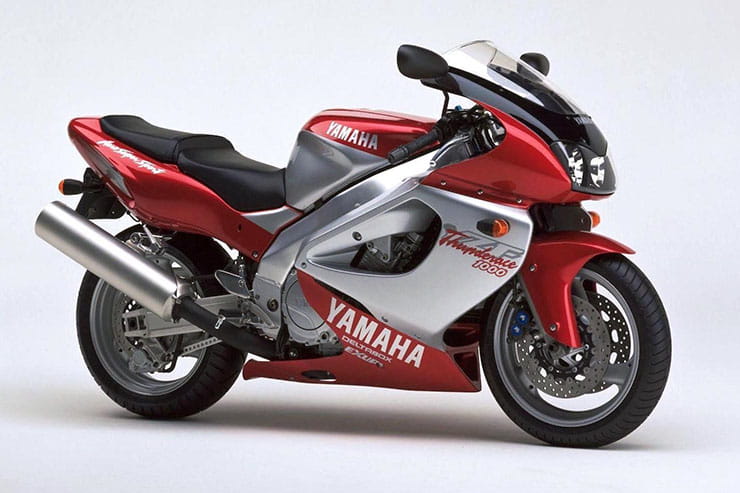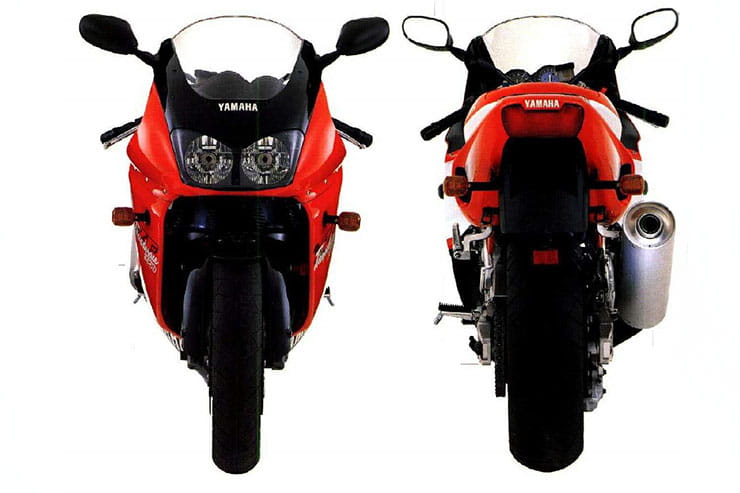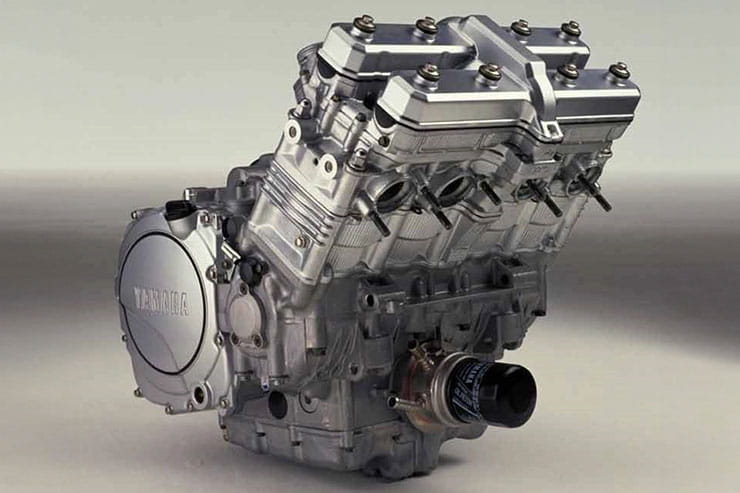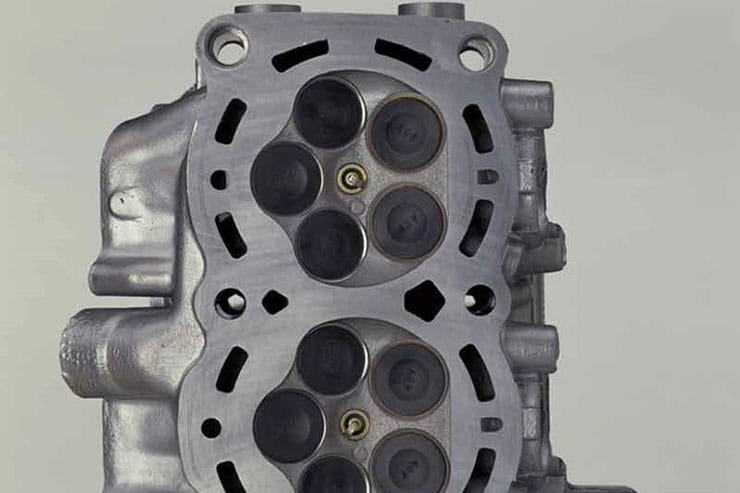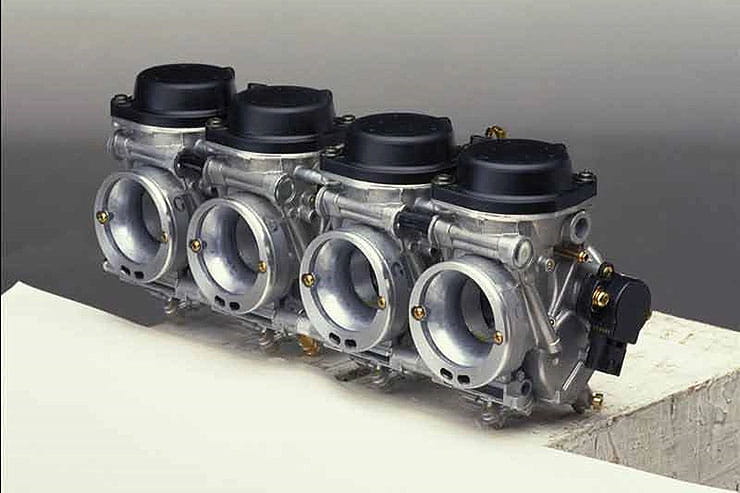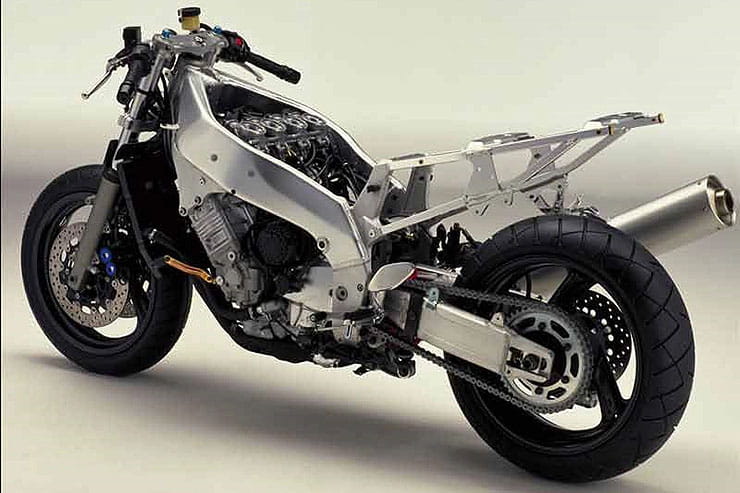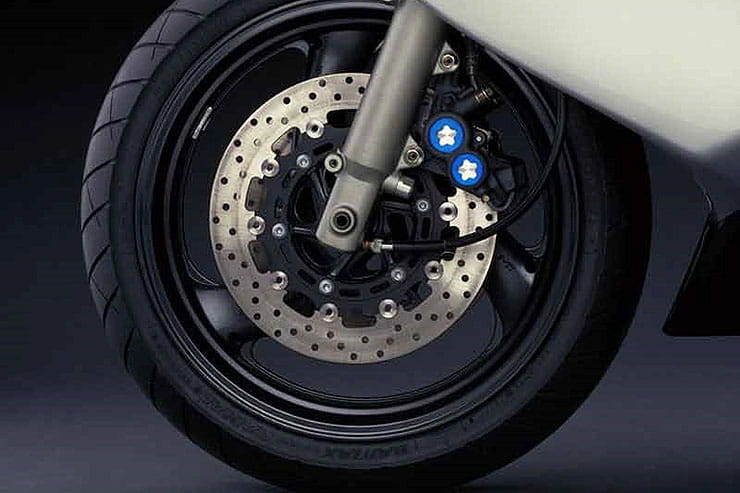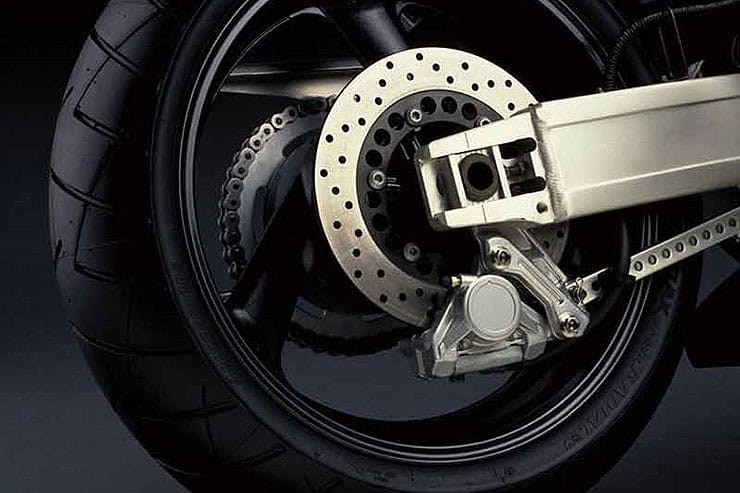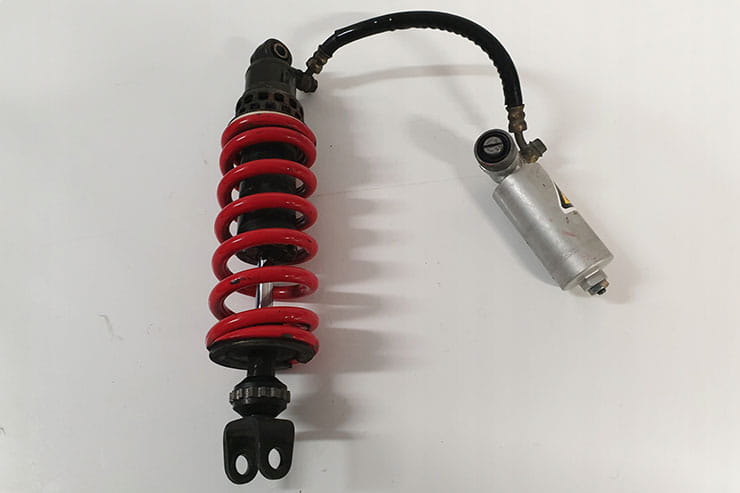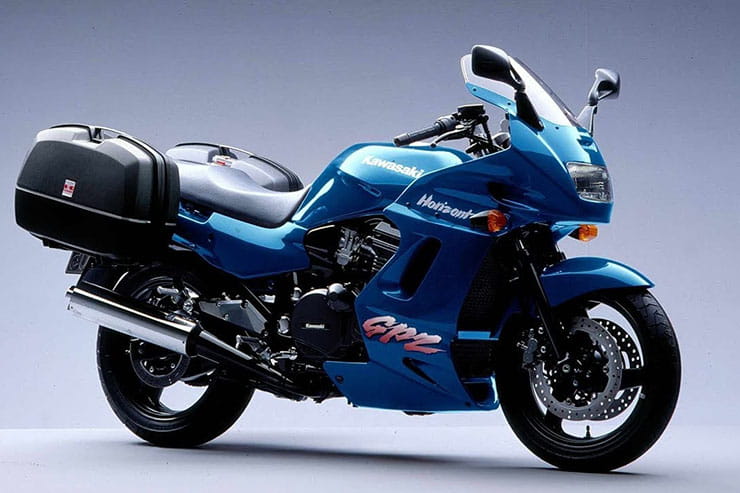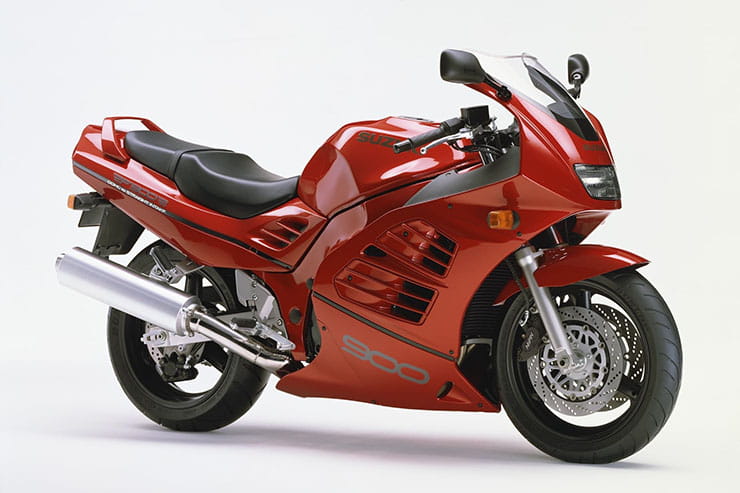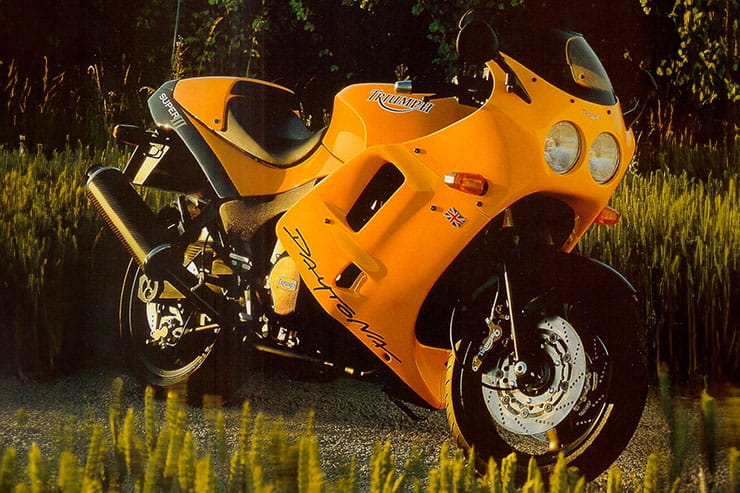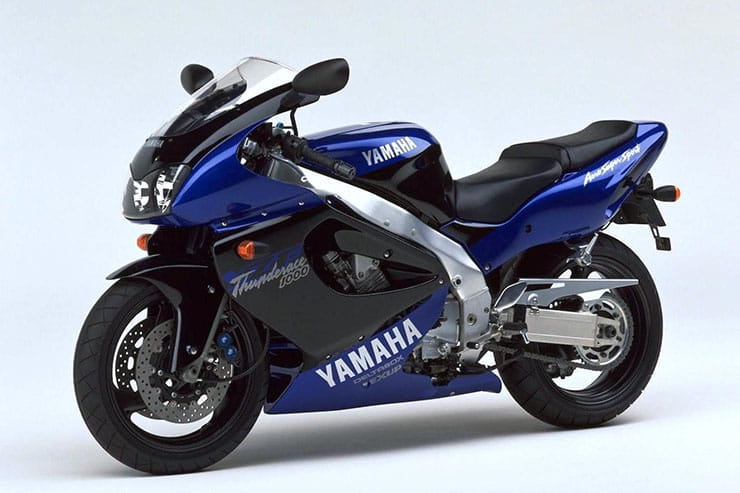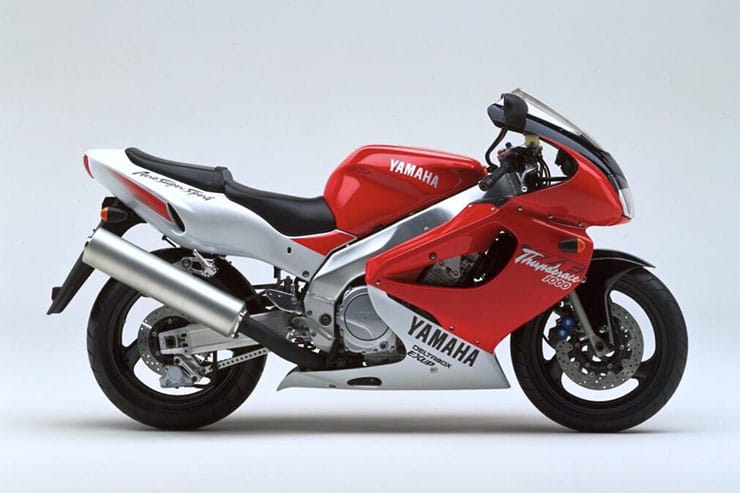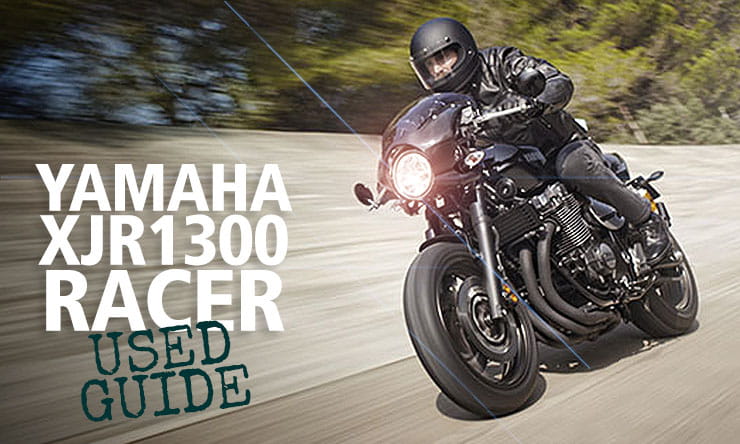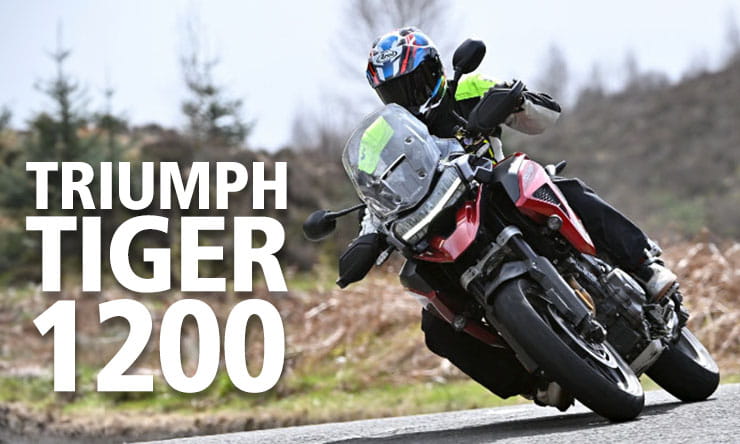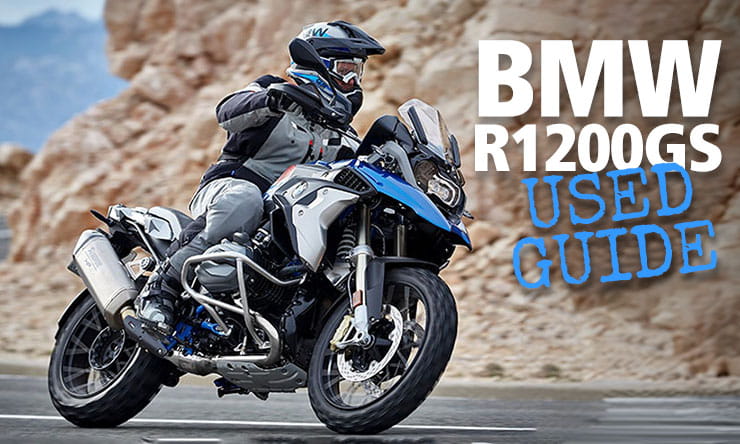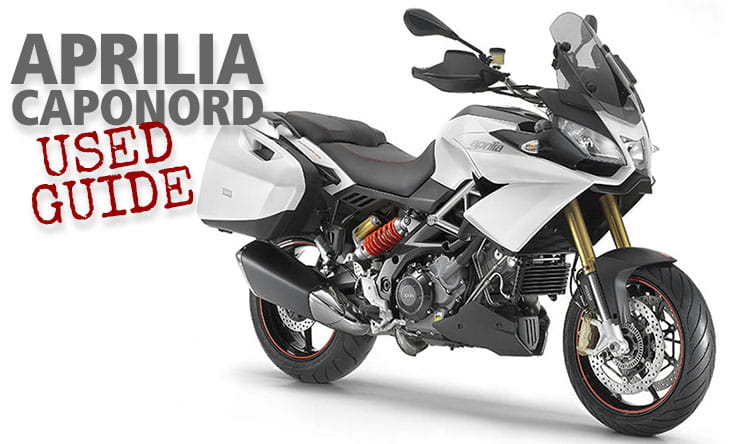Price: £1600-£3300 | Power: 145bhp | Weight: 198kg | Overall BikeSocial Rating: 3/5
High performance doesn’t have to cost the earth. Look at the YZF1000R Thunderace; this litre-class superbike topped Yamaha’s range in the mid-1990s, filling the role between the FZR1000 EXUP and YZF-R1. Today, Thunderace prices start at just over £1500 so you can have genuine 160mph potential and 130bhp-plus sitting in your garage for less than the price of an airbag leather suit. In other words, a lot of bike for very little money.
While the Thunderace may lack the glamour of Honda’s ’90s FireBlades, this 20-valve inline-four still has the potential to be a seriously quick and engaging road-bias sports bike, with more than enough oomph for any situation. Indeed, it’s not hard to see what drove – and still drives – the YZF1000R’s popularity when you consider the two seminal models that came together to create it – the FZR EXUP gave its engine, and the WSB race-winning YZF750 donated its chassis to the cause.
There’s a lot to like about the YZF1000F. Aside from its hugely flexible engine, and predictable, balanced handling you get Yamaha’s excellent one-piece ‘blue-spot’ calipers, a roomy riding position, decent protection from the elements, plus the potential to improve almost every aspect of the bike relatively cheaply and easily. An upgraded seat is a must, however – a lack of padding on the OE perch has always hampered the Thunderace’s long distance potential.
For those on a budget who still enjoy the charms of a powerful sports bike, but who aren’t quite ready to embrace litre-plus adventure bikes just yet, a Thunderace is a fine choice.
Yamaha YZF1000R Thunderace (1996-2003) - Price
Honda’s FireBlade caught Yamaha with its trousers down. The Iwata firm had no instant answer to the CBR900RR in ’92, so instead created a stop-gap model, the YZF1000R Thunderace, using the best components to hand, before unveiling its proper answer, in the form of the YZF-R1, in 1998.
Although on sale for seven years (1996-2003), the Thunderace’s final update came in 1999. The extent of each model year’s updates was limited to paint and graphics, bar a wiring loom change in 1997 to allow easier fitment of alarms. Consequently, values relate more to condition and mileage than year of registration. All bikes registered between ’99 and ’03 are 1999 spec.
1996-2003 YZF1000F Thunderace values: Rough £900-£1400; Tidy £1600-£2500; Mint £2800-£3300
First year Thunderace’s (1996) came in red/white or black/grey. Claimed power 145bhp, although it’s more like 125bhp at the wheel. 198kg. For 1997 colours changed to red/white/black and black/blue; wiring loom updated to accept easy attachment of alarm. 1998 bikes are blue/black only. The following year went back to two colour options – silver/red with silver wheels or silver/black. No further updates in the model run.
Pros & Cons
- Gutsy motor with more than enough stomp for huge grins
- Stable, predictable handling and sharp blue-spot brakes
- Hard to beat in terms of bhp-per-£
- Styling hasn’t aged well at all
- Seat is horribly uncomfortable
- Finish is poor – gets tatty very quickly
Yamaha YZF1000R Thunderace (1996-2003) Engine and Performance
The Thunderace’s 1002cc motor was lifted from the FZR1000 EXUP, which first appeared in 1989. But the unit’s five-valves-per-cylinder configuration, forward-canted cylinders, and downdraught carbs can all be traced back to the 1985 FZ750.
Back in 1989 the FZR1000 EXUP was the ultimate superbike, a 125bhp, 165mph missile bristling with GP derived technology. The previous FZR1000 Genesis was 989cc, also featuring five-valve heads. For the ’89 FZR – the bike that would eventually donate its powerplant to the Thunderace – Yamaha increased bore size by 0.5mm to 75.5mm, giving a displacement of 1002cc. But what really aided performance was Yamaha’s innovative ‘Exhaust Ultimate Powervalve’.
EXUP, as it’s more commonly known, is basically a servo operated blade positioned inside the exhaust system at the point where the downpipes meet the tailpipe. At low rpm the blade is held in a closed position to aid lowdown and midrange grunt. At higher rpm the blade opens, allowing exhaust gases unrestricted passage, thus offering the full benefit of the engine’s high state of tune for maximum top end performance. Obviously, the system – later copied by the other three Japanese marques – was too good not to fit to the Thunderace.
Both the FZR and Thunderace motors fuel through 38mm Mikuni carbs but crucially for the later bike Yamaha sold the Thunderace in full power form (a claimed 145bhp). The FZR was about at a time when power restrictions were a real threat, so the manufacturers entered into a gentleman’s agreement to cap power at 125bhp. That didn’t stop countless FZR owners from cutting the half-moon restrictors out of the inlet rubbers and running their EXUPs as intended, however…
In performance terms a Thunderace is more than enough for the road, even if a claimed 145bhp sounds fairly modest by modern standards. In practice, it’s not. The engine is strong, especially at the bottom end and through the midrange. It’s also smooth, and a hoot to race through its five-speed gearbox. Indeed, so grunty is the Thunderace unit that it simply didn’t require a close-ratio six-speed cluster. And given that the Thunderace is 10 kilos lighter than an EXUP, they’re pretty rapid too.
Yamaha YZF1000R Thunderace (1996-2003) Handling & Suspension
Making the best of what they already had was a smart move on Yamaha’s part. This meant shoehorning the aforementioned FZR1000 EXUP motor into the firm’s then most capable chassis – that of the YZF750, a bike not unfamiliar with the top step of WSB’s podium. Yamaha stopped short of using the YZF’s braced swingarm, however, instead fitting a simple yet chunky aluminium unit that looks could cope with twice the torque on tap.
That said, both the Thunderace and its smaller 600 sibling, the YZF Thundercat, were built to a budget. Yamaha saved a load of yen by fitting conventional telescopic forks to the Thunderace, albeit beefy 48mm units, rather than more sophisticated upside-down units as seen on both EXUP and YZF750. Suspension is fully adjustable both front and rear, but it was set the comfy side of sporty from the off – by now any original and untouched Thunderace forks or shocks will be about as supportive as a waterbed… If a suspension overhaul’s not already been done, factor in the cost when haggling.
The Thunderace’s ride is stable and perhaps more capable than its bulbous looks suggest, thanks to the YZF based chassis, which offers loads more feedback than, say, a first-generation Kawasaki ZX-9R. Some brave souls even Thunderace’s straight out of the crate in the TT’s production class, so if they can manage that they’re more capable of tackling British A or B roads.
Braking was an area Yamaha didn’t skimp on, however, fitting their then new and hugely effective one-piece blue-spot calipers up front, biting down on twin 298mm discs. Good to know on a litre-class superbike capable of 170mph.
Yamaha YZF1000R Thunderace (1996-2003) What to look for
EXUP valve The exhaust powervalve, situated where the four downpipes meet the single end pipe, is an ingenious device that artificially changes the system’s tuned length. But it requires regular maintenance if it’s to work as intended. The extreme heat and soot inside the exhaust can cause the valve’s blade to stick in situ. Remove and relube with copper grease once a year, and check cable tension while you’re in there.
Gearbox The Thunderace transfers its considerable power and grunt to the rear wheel via a five-speed gearbox. The engine produces enough torque to work through these long ratios, but if you want even brisker acceleration, especially in the midrange, a six-speed YZF750 cluster will fit.
Exhaust Stock 4-1 exhaust is mild steel, and rots from both the inside and outside, so it’s likely that most Thunderace’s out there are by now running aftermarket systems. Very few non-standard exhausts run the EXUP valve, so low down and midrange performance may be compromised. Black Widow Exhausts do a full stainless system for £375.
Engine The 20-valve mill is usually very strong and reliable. Refresh the oil – a quality semi-synth 10/40W is perfect – every 3000 miles and you won’t go far wrong. Oil consumption is a Yamaha trait, but it’s using any more than a litre every 1000 miles you might want to delve inside. Bikes that have been standing unused for a while can suffer from stuck rings – the piston rings stick in their lands – but they will loosen and reseat correctly with use.
Reg/rec Poor earths are the starting point of almost every electrical gremlin, so if a Thunderace has been stored in a damp garage or, worst still, outside be prepared for issues. The YZF’s reg/rec is a two-point unit that’s expensive to replace.
Shock Although fully adjustable, as are the forks, the rear shock wasn’t that good from new. A quality aftermarket unit, like Nitron, K-Tech or Hagon is the only way to reacquaint any Thunderace with controlled damping. Check the rear linkages too. They’re often overlooked, even at major service time, and consequently left dry as a bone. Simple to strip, clean and regrease for a big win.
Plastics The YZF1000R’s bodywork covers some considerable acreage, so there’s plenty of area to get scratched, scuffed or cracked, especially if the bike’s been dropped. Years of removal and reattachment of said panels when servicing the bike leave their mark too, with broken mounting points, missing tangs and/or badly fitted sections, so give any potential purchase a thorough look over.
Kawasaki GPZ1100E, 1995 | Approx Price: £800-£2500
Power/Torque: 129bhp/73.7lb-ft | Weight: 242kg
Mid-’90s budget sports tourer with detuned ZZ-R1100 motor, basic steel spine frame and 1980s styling. Fast, reliable, effective and cheap, but a ZZ-R is all of the same and much more. Worth a sniff if you find one really cheaply, otherwise give them a swerve because there’s better for the money – Thunderace, RF and ZZ-R.
Suzuki RF900R, 1994 | Approx Price: £800-£3000
Power/Torque: 135bhp/73.9lb-ft | Weight: 203kg
Ignore the weird styling, RF900s absolutely rock. GSX-R11 derived motor has masses of stomp and the steel perimeter chassis offers decent handling provided the suspension’s still in decent nick. A brilliant sports tourer and superb value for money. Early single colour bikes look way better.
Triumph Daytona Super III, 1994 | Approx Price: £5000-£8000
Power/Torque: 115bhp/63lb-ft | Weight: 211kg
Triumph’s last throw of the dice for its early Daytona sports bike. Carbon fibre extras, six-pot brakes, and a smidge more power than stock, the Super III is great in a straight line, but too big, heavy and old to be fun in the bends. Riding position is uncomfortable too. Rare and collectable though. Standard 900 is cheaper.
Yamaha YZF1000R Thunderace (1996-2003) Verdict
Yamaha’s Thunderace may be almost 30 years old now, but it’s still got a lot to offer. A competent and quick road bike, plus a decent distance tool once the original seat’s been uprated. But of all though, they’re dirt cheap, not that expensive to run and easy to upgrade. Big performance on a small budget.
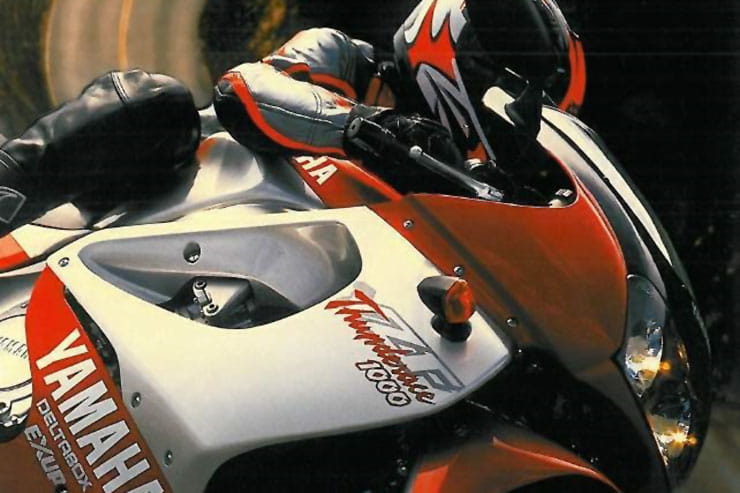
Yamaha YZF1000R Thunderace (1996-2003) - Technical Specification
|
Original price
|
£9099
|
|
Current price range
|
£1600-£3300
|
|
Capacity
|
1002cc
|
|
Bore x Stroke
|
75.5 x 56mm
|
|
Engine layout
|
Liquid-cooled, DOHC, 20v inline-four
|
|
Power
|
145bhp (106.7kW) @ 10,000rpm
|
|
Torque
|
90.4lb-ft (108.3Nm) @ 8500rpm
|
|
Top speed
|
165mph
|
|
Transmission
|
5-speed, wet, multiplate clutch, chain final drive
|
|
Average fuel consumption
|
39.5mpg
|
|
Tank size
|
19 litres
|
|
Max range to empty (theoretical)
|
165 miles
|
|
Reserve capacity
|
1 litre
|
|
Rider aids
|
none
|
|
Frame
|
Aluminium Deltabox beam
|
|
Front suspension
|
45mm telescopic forks
|
|
Front suspension adjustment
|
Preload, rebound and compression adjustable
|
|
Rear suspension
|
Monocross monoshock
|
|
Rear suspension adjustment
|
Preload, rebound and compression adjustable
|
|
Front brake
|
2 x 298mm discs, 4-pot calipers
|
|
Rear brake
|
245mm disc, 2-pot caliper
|
|
Front tyre
|
120/70 ZR17
|
|
Rear tyre
|
180/55 ZR17
|
|
Rake/Trail
|
24°/ 97mm
|
|
Dimensions (LxWxH)
|
2085mm x 740mm x 1175mm
|
|
Wheelbase
|
1433mm
|
|
Ground clearance
|
135mm
|
|
Seat height
|
795mm
|
|
Dry weight
|
198kg
|
Looking for motorcycle insurance? Get a quote for this motorbike with Bennetts bike insurance



